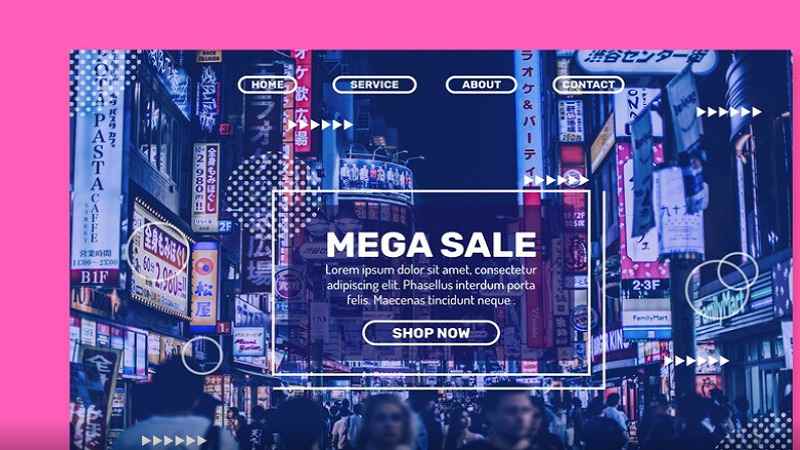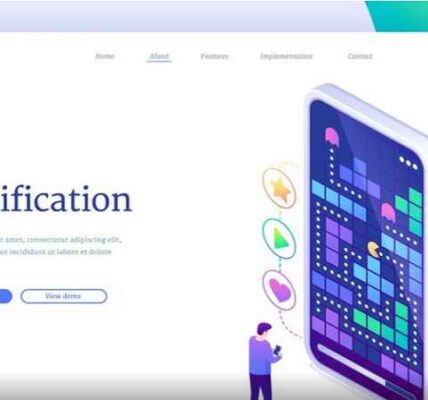Website for Ticket Sales: A Guide to Gamification for the Gamification Summit
In the world of event management and ticket sales, creating an engaging and user-friendly website is essential. This is particularly true for a niche event like the Gamification Summit, where the very nature of the event centers around integrating gaming mechanics into different industries. Therefore, offering a website for ticket sales that incorporates gamification techniques can elevate the user experience, engage potential attendees, and drive ticket sales more effectively.
In this article, we will walk through the process of designing a website for ticket sales for the Gamification Summit, discussing how to integrate gamification, practical steps, and strategies that will ensure your ticketing website stands out and performs well.
Why Gamification in Ticket Sales?
Gamification involves the application of game-like elements in non-game contexts. It can be used to incentivize and motivate users to complete certain actions, such as buying tickets or sharing event details with their social network. For an event like the Gamification Summit, gamification can add value by aligning the ticket-buying experience with the core theme of the summit itself — making it fun, engaging, and rewarding for the attendees even before the event begins.
A gamified website for ticket sales can lead to:
- Increased Engagement: Visitors will spend more time on the site and interact with various features.
- Higher Conversion Rates: Gamification techniques can encourage users to complete the ticket-buying process.
- Enhanced Brand Experience: Reflects the theme of the event, setting the tone for what attendees can expect.
- Building a Community: Gamification can help build excitement and a sense of belonging even before the event starts.
Now, let’s look at practical steps to create a gamified website for ticket sales for the Gamification Summit.
Step 1: Defining Your Audience and Objectives
Before diving into the design and gamification elements, you must first understand the type of audience that will be attending the Gamification Summit. Are they industry professionals? Gamification enthusiasts? Tech innovators? Or maybe newcomers looking to understand the potential of gamification?
By defining your audience, you can tailor the gamification elements accordingly. For example, professionals may appreciate more advanced features like achievements and leaderboards, while newcomers might enjoy simple, fun, and educational gamified elements.
Objectives for the website should include:
- User Engagement: Keeping potential customers on the website and encouraging them to purchase tickets.
- Brand Awareness: Reinforcing the Gamification Summit brand and its mission.
- Increase Sales: Using gamification to make the purchasing process more enticing.
- Community Building: Allowing users to interact with one another before the event.
Step 2: Choose the Right Ticketing System
The first thing you’ll need is an efficient ticketing system that can integrate easily with your website. Popular systems like Eventbrite, Ticketmaster, or a custom solution are often used for handling ticket sales. The key is ensuring the system you choose can integrate seamlessly with the gamified elements you want to implement.
Some things to look for:
- Customizable Options: You should be able to modify ticket categories, set deadlines for early bird rates, and easily track sales.
- User Accounts: A user login system can support personalized experiences, such as tracking achievements, earning points, or interacting with a leaderboard.
- Secure Payments: An integrated, secure payment gateway ensures smooth transactions for ticket buyers.
Step 3: Gamify the User Journey
Gamification is most effective when it is embedded into the entire user journey — from visiting the website to purchasing tickets and beyond. Here’s how to gamify various steps:
3.1 Introduce a Reward System
Incentivize ticket purchases by rewarding users with points, badges, or exclusive content as they move through the ticket-buying process. For instance:
- Pre-Registration Rewards: Offer users points for registering their interest before the event.
- Early Bird Points: Encourage early purchases by awarding points or virtual currency that can be redeemed for discounts or exclusive access to certain summit content.
- Referral Badges: Reward users with badges for referring others to purchase tickets, or offer discounts for every successful referral.
3.2 Leaderboards and Challenges
Create challenges that users can participate in to increase engagement. These can range from simple activities to more involved tasks:
- Leaderboard for Early Birds: Display a leaderboard showing the top early-bird ticket buyers. Offer rewards to those who make it to the top.
- Social Media Challenges: Reward users who share the event on social media or invite friends. You could create challenges where users earn points for sharing a specific hashtag or posting a creative gamification-related content piece.
- Gamified Countdown: Implement a countdown timer with goals that users can unlock at specific times, such as unlocking exclusive content, previews, or discounts as the event draws closer.
3.3 Interactive Content
Incorporate mini-games, quizzes, or polls that allow users to interact with the website:
- Gamification Quiz: Embed a short quiz on gamification principles where users can earn points for correct answers.
- Gamified Surveys: Use surveys to engage visitors and give them points for completing them.
This interactive content helps visitors feel more involved and encourages them to spend more time on the website, increasing the likelihood of ticket purchases.
Step 4: Personalized User Experience
A personalized experience can significantly enhance engagement, particularly in a gamified context. This can be achieved through:
- User Profiles: Allow users to create profiles where they can track their progress, view their earned rewards, and see upcoming challenges or tasks.
- Customized Recommendations: Based on user activity, provide tailored event content, such as speaker previews, sessions, or networking opportunities.
- Interactive Agenda: Allow users to personalize their event schedule. Gamification elements could reward users for choosing and attending certain sessions or completing specific tasks during the summit.
Step 5: Optimize for Mobile Devices
Since a significant portion of ticket sales and engagement will likely occur on mobile devices, it’s critical that your website is fully optimized for mobile users. A responsive design ensures that all the gamification elements — from leaderboards to challenges and ticket purchase flows — function smoothly on smartphones and tablets.
Some mobile-specific considerations:
- Fast Load Time: Gamified elements should load quickly to avoid user frustration.
- Touch-Friendly Design: Ensure all interactive elements, like buttons and quizzes, are easy to use on touchscreens.
- SMS and Push Notifications: Use notifications to remind users of upcoming deadlines, new rewards, or the start of new challenges.
Step 6: Social Integration and Sharing
Social media integration is a must when building engagement around an event. Let users share their achievements or challenges on their social profiles directly from the ticketing website. The added benefit of social sharing is free marketing and exposure for your event.
Some ways to encourage sharing include:
- Social Media Badges: Give users badges that they can proudly display on their social profiles or share with others.
- Shareable Leaderboards: Let users share their leaderboard standings with friends.
- Incentivized Social Media Campaigns: Offer additional rewards for users who share a post or invite others to purchase tickets.
Step 7: Track, Analyze, and Optimize
Once your gamified website is live, it’s essential to track user engagement and ticket sales data. Tools like Google Analytics, Hotjar, or user tracking plugins can help you understand which gamified elements are working best.
Use this data to optimize:
- User Experience: Remove any friction points that may be preventing ticket sales.
- Gamified Challenges: Adjust challenges or rewards to keep them fresh and engaging.
- Conversion Rates: Use A/B testing to see which gamification strategies yield the highest conversion rates.
Conclusion
A gamified website for ticket sales at the Gamification Summit offers a unique opportunity to enhance the user experience, drive ticket sales, and create a buzz around the event even before it begins. By following the practical steps outlined above, from defining your audience to optimizing for mobile, you can ensure that your ticketing website becomes a hub of excitement and engagement. Gamification doesn’t just make the process fun; it increases conversions, builds a community, and sets the tone for the dynamic event that is the Gamification Summit.




